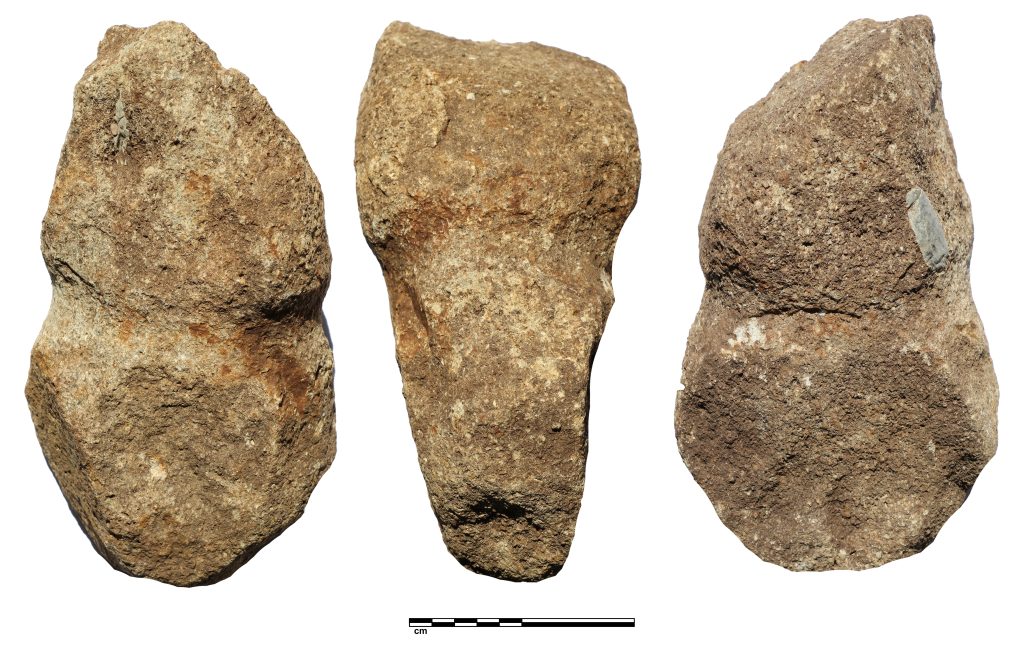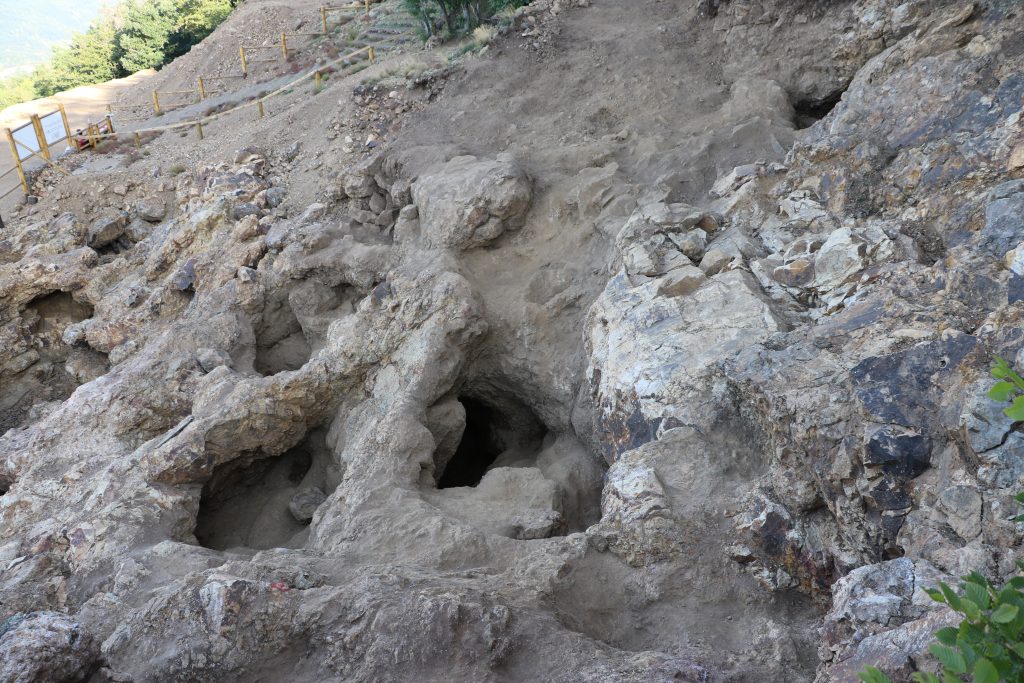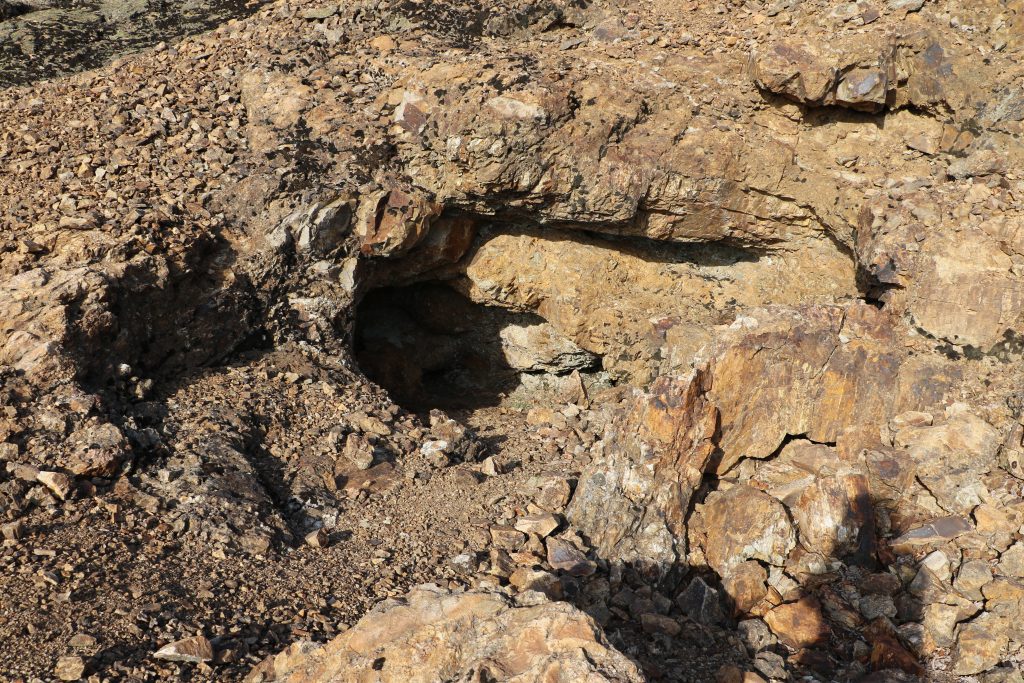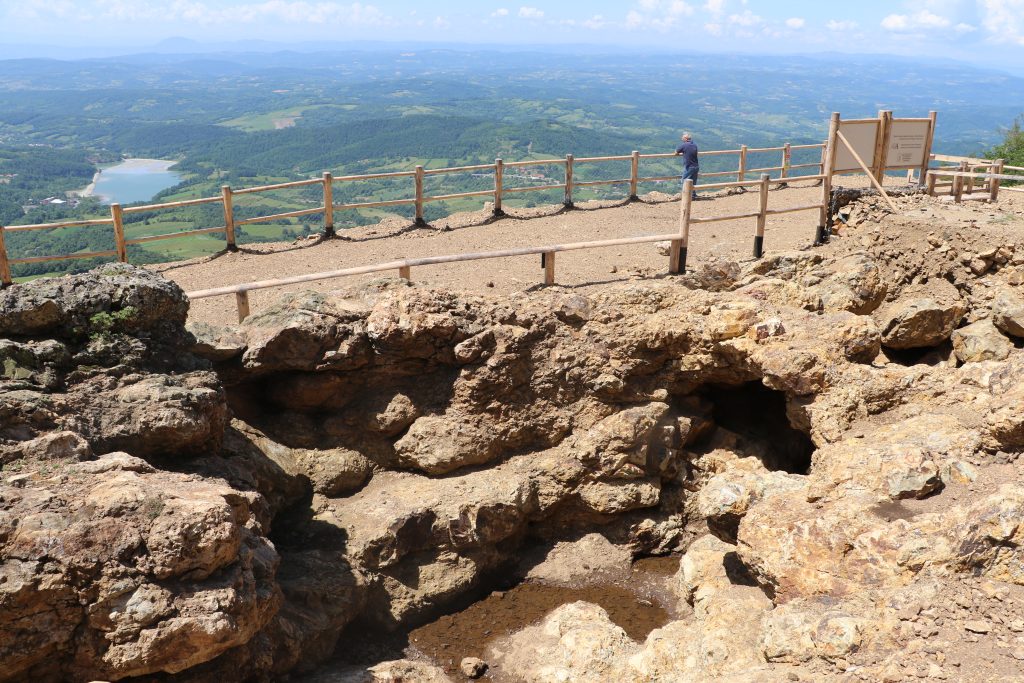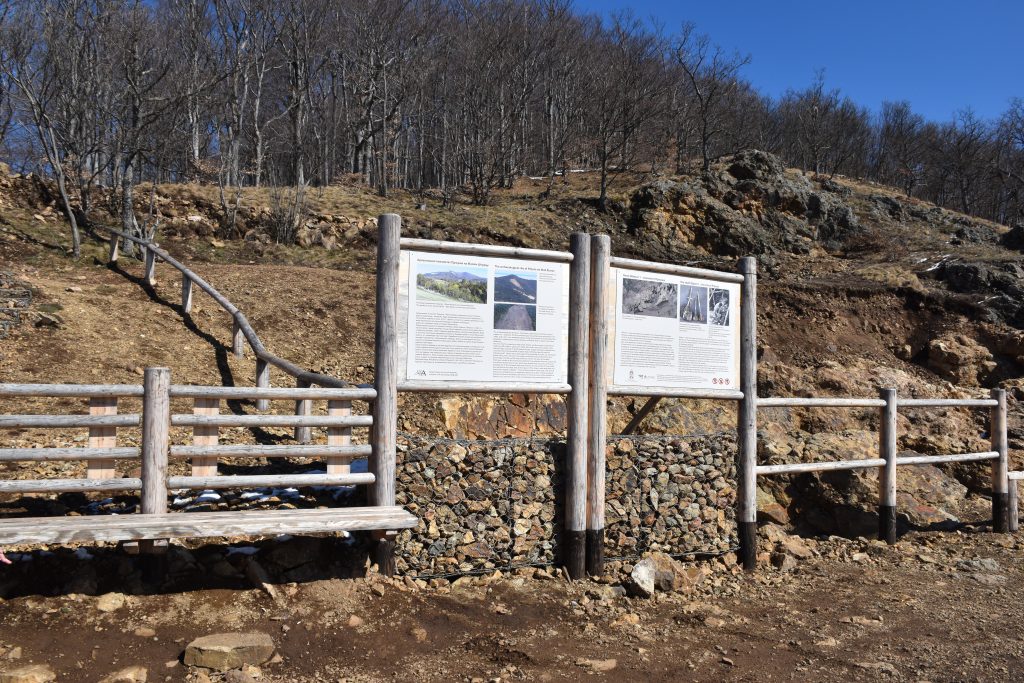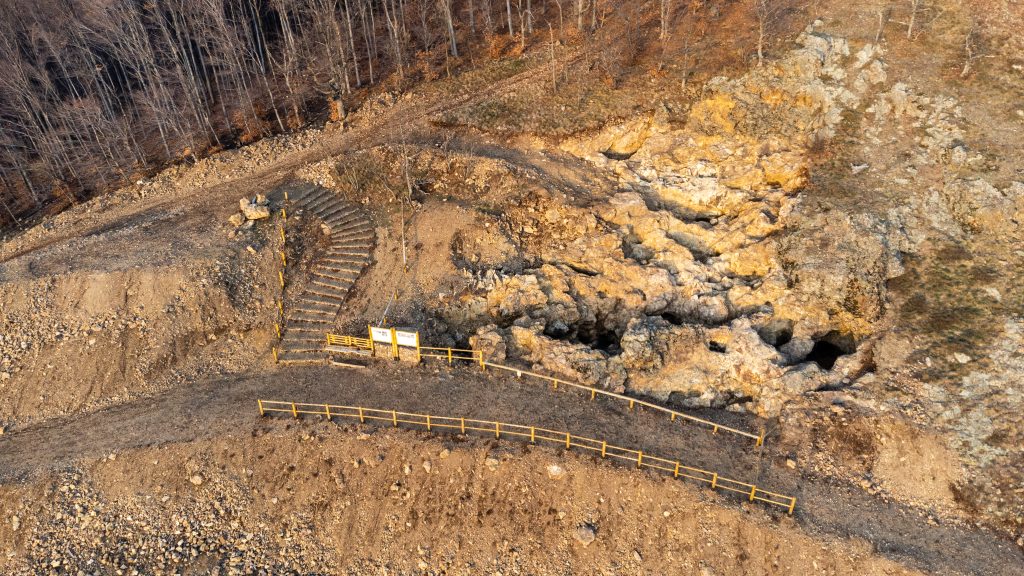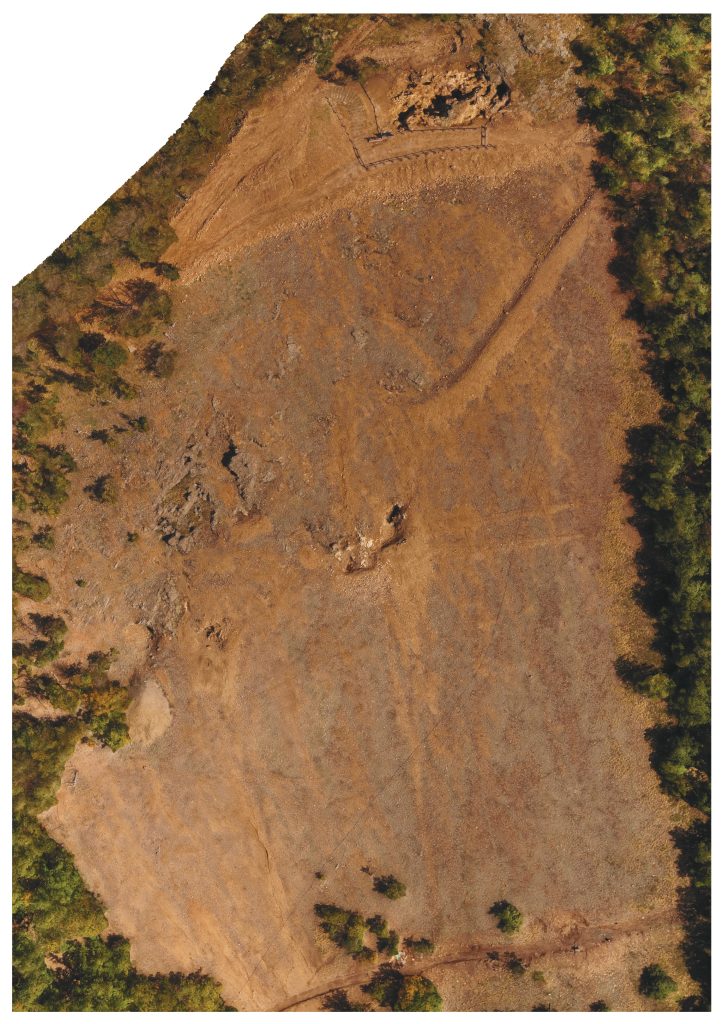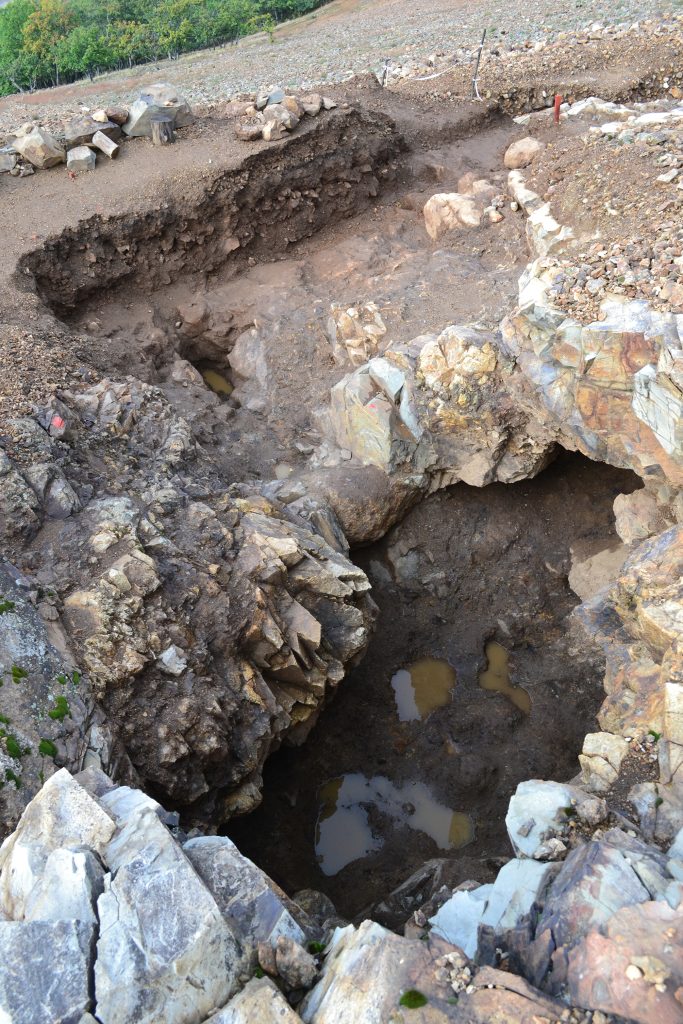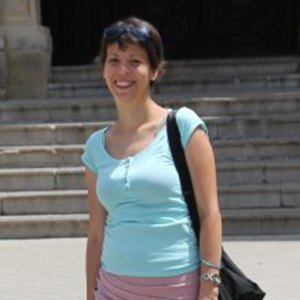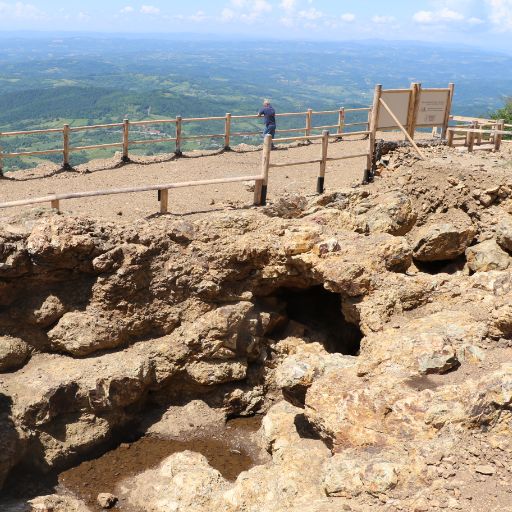
PRLJUŠA-MALI ŠTURAC
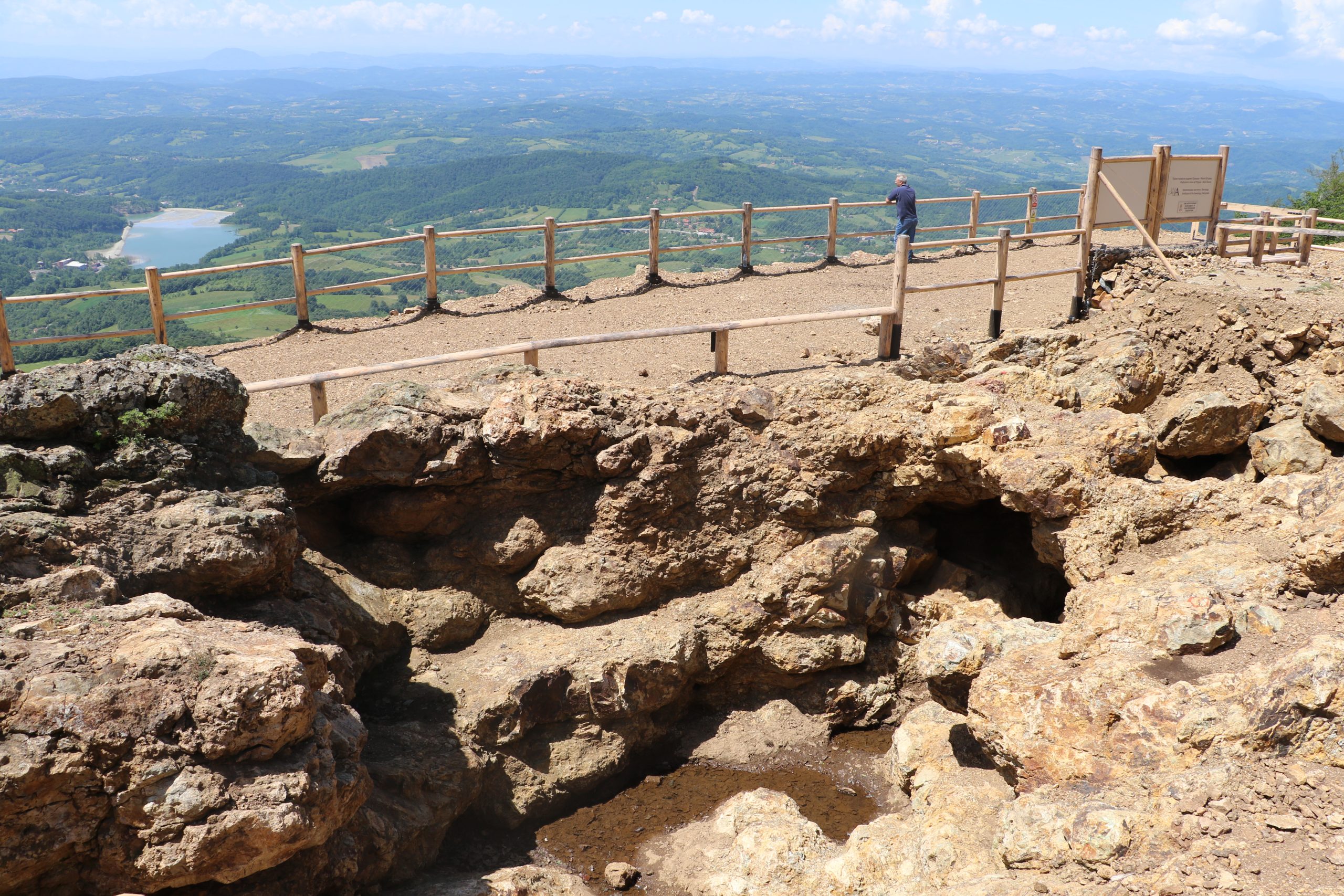
Project Name:
- Mali Šturac prospecting: prehistoric mining research (since 2010)
- Arrangement, protection and presentation of the area of the Prljuša archaeological site on Rudnik (from 2019)
Project director: Dr Vidan Dimić (1); Dr Emilija Nikolić (2)
Team members: Dr Dragana Antonović, Dr Selena Vitezović, Dr Bojan Popović, MA Danica Mihailović, Ana Cicović
Collaborations: Museum of the Rudnica-Takovo region, Gornji Milanovac
Mali Šturac, located in Prljuša, Rudnik Mountain’s lowest summit in central Serbia, is one of the largest ancient mines in the Balkans. It was used by the bearers of the Bubanj-Hum culture throughout the Eneolithic and Early Bronze Age. In the bottom half of the site, geophysical testing discovered more than 20 historic mine holes concealed behind a thick layer of stones and gravel. These shafts, along with a large quantity of mining hammer stones, attest to prehistoric mining activity. No evidence of additional ore processing has yet been identified, either on the site or in its near surroundings. In 2017, Prljuša was designated as an archaeological site, and in 2019, tourists were welcomed.
One of the largest prehistoric mines in the Balkans is located in Prljuša, on Mali Šturac, the lowest peak of Rudnik Mountain, in Central Serbia. It was exploited during the Eneolithic and Early Bronze Age by the bearers of the Bubanj-Hum culture. Even today, there is a large amount of carbonate copper ore, especially malachite, but it was never exploited after prehistoric times. It is assumed that one of the main reasons is that the ore is found in tough rocks, which makes exploitation somewhat demanding, although the fact that there are richer copper deposits in the Balkans that are still exploited today should not be excluded. It was extracted from veins that were located at a shallow depth, due to which irregular mining shafts were created with winding corridors and small extensions called galleries. Therefore, the ceilings in those shafts remained relatively thin and had no support, so they collapsed over time and buried the old mining pits. Geophysical research has revealed more than 20 old mining shafts hidden under a thick layer of stones and gravel in the site’s lower part. However, some prehistoric shafts are so large that they were not completely buried and are still visible on the surface. These shafts and the vast number of mining hammer stones bear witness to extensive mining activity in prehistoric times.
The tough rocks in which the malachite was hidden were the reason for the complex technology of ore exploitation. The stones were heated by fire, traces of which have been documented in the excavated shafts. The heated rocks were then quickly cooled by water, which is easily accessible all around the site. The cracked rocks were broken with large hammer stones, and a set of smaller hammer stones was used to extract the pure malachite. No traces of further ore processing have been discovered, either on the site itself or in its immediate surroundings.
Dr Borislav Jovanović discovered the site in 1980. Initial research was carried out from 1981 to 1989 and resumed in 2011. This continues to this day with the financial support of the Ministry of Culture and Information of the Republic of Serbia, and donations from the companies Rudnik and “Rudnik” A.D., from Rudnik.
Following a decision of the Government of the Republic of Serbia, the site of Prljuša gained the status of an archaeological site in 2017 (Službeni glasnik RS 13/2017). Given the great importance of Prljuša, it was proposed by the Archaeological Institute in 2018, with the support of the Institute for the Protection of Cultural Monuments in Kraljevo, to present the investigated structures to the public. The excellent preservation of old mining shafts and hard rocks that do not crumble under the influence of weathering offered a good opportunity to present the explored areas to a broader audience, so the area around the shaft Object 1, which has been excavated since 2014, was opened to visitors in 2019.
In 2019, an access ramp was constructed, Object 1 and the slope were secured with wooden fences with a bench, and information panels were installed, making Prljuša the only example of a prehistoric mine open for visitors in Serbia. The successful implementation of this project confirmed the possibility of sustainability in the presentation of the archaeological site with minimal interventions, and provided guidelines for the further planning of its entire space. After arranging and presenting the area surrounding the mining shaft (Object 1), a safe space for visitors was arranged at Prljuša, and the site was officially sign-posted for the first time.
The archaeological site of Prljuša attracts an increasing number of visitors every day. Considering that experts, visitors, and the local community very positively received the implemented interventions, a project was drawn up to arrange the remaining part of the site and connect the explored mine shafts in a unified presentation. During 2022, the arrangement of additional access paths and the installation of wooden fences, benches, and information boards related to other archaeological remains of mining were continued, and securing the space around another prehistoric shaft is planned, as well as the furnishing of the mining corridor from the modern era with the installation of tracks, wooden substructures, and an entrance gate.
Selected bibliography:
Nikolić, E., Popović, B., Antonović, D., Vitezović, S., Dimić, V. 2021. Zaštita rudarsko-geološkog nasleđa planine Rudnik: uređenje prostora oko praistorijskog okna na arheološkom nalazištu Prljuša – Mali Šturac, u S. Vitezović, M. Radišić, Đ. Obradović (ur.) Arheologija u Srbiji. Projekti Arheološkog instituta u 2019. godini. Beograd, Arheološki institut: 363-376.
Antonović, D., Vitezović, S., Dimić, V. 2021. Prljuša, Mali Šturac: istraživanje u 2019. godini, u: S. Vitezović, M. Radišić, Đ. Obradović (ur.), Arheologija u Srbiji: projekti Arheološkog instituta u 2019. godini, Beograd, Arheološki institut: 59–68.
Antonović, D., Vitezović, S., Dimić, V.2021. Prljuša, Mali Šturac: istraživanje u 2018. godini, u: S. Vitezović, M. Radišić, Đ. Obradović (ur.), Arheologija u Srbiji: projekti Arheološkog instituta u 2018. godini, Beograd 2021, 55–61.
Антоновић, Д., Николић, Е., Витезовић, С., Поповић, Б., Димић, В. 2020. Прљуша, Мали Штурац – истраживање, заштита и презентација праисторијског рударства на Руднику, Гласник Друштва конзерватора Србије 44: 66–71.
Dimić, V. (2019). Hammering the Past: The Experimental (Re)construction and Usage of Prehistoric Mining Hammerstones from Prljuša-Mali Šturac site, Rudnik Mountain; Старинар, Археолошки институт, Београд: 85–112
Цицовић, А., Радичевић, Д., Антоновић, Д. 2018. Рударење на Руднику кроз праисторију, антику и средњи век: изложба поводом Дана рудара и десет година археолошких истраживања, 4. август – 7. септембар 2018. године, Рудник: каталог. Рудник: Рудник и флотација „Рудник”; Горњи Милановац: Музеј рудничко-таковског краја
Antonović, D., Dimić, V. 2017. Copper ore exploitation at the site of Prljuša on Mali Šturac, in S. Vitezović, D. Antonović (eds.) Archaeotechnology studies: Raw material exploitation from prehistory to the Middle Ages, Beograd, Srpsko arheološko društvo : 117 – 142.
Antonović, D., Vukadinović, M. 2017. Pingе 2 at Mali Šturac: archaeological and geophysical investigation of ancient mining, in I. Miloglav (ed.) MetArh – 05th International scientific conference Methodology & Archaeometry, Zagreb, 30th November – 1st December 2017, Zagreb, Croatian Archaeological Society: 39.
Dimić, V. 2017. The (Re)construction and usage of mining hammerstones from copper mining site of Prljuša – Mali Šturac: experimental archaeology, in I. Miloglav (ed.) MetArh – 05th International scientific conference Methodology & Archaeometry, Zagreb, 30th November – 1st December 2017, Zagreb, Croatian Archaeological Society: 39 – 40.
Антоновић, Д., Вукадиновић, М., Цицовић, А. 2014, Праисторијски рудник бакра на Малом Штурцу: истраживања 2010 – 2012. године, Зборник Музеја рудничко-таковског краја 7: 5–20.
Антоновић, Д. 2013. Камено оруђе са Малог Штурца : истраживање 2011. и 2012. Године, Зборник Народног музеја XXI-1: 61–76.
Antonović, D., Vukadinović, M. 2012, Eneolithic mine Prljuša – Mali Šturac: archaeological and geophysical investigations, Старинар LXII (2012): 95 – 106.
Bogosavljević, V. 1995. Minning hammerstones of Prljuša – Mali Šturac site, in B. Jovanović (ed.) Ancient minning and metallurgy in Southeast Europe: International Symposium, Donji Milanovac, May 20-25, 1990, Bor, Belgrade 1995: 37 – 44.
Jovanović, B. 1983. Mali Šturac – ein neues prähistorisches Kupferbergwerk in Zentral erbien, Der Anschnitt: Zeitschrift fur Kunst und Kultur im Bengbau (Bochum), 4–5 (1983): 177–179.


